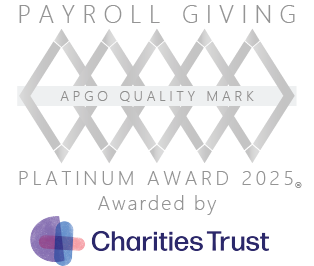For years Charities have been honing in on “signature” or “flagship” events in order to amplify the strength of brand and fundraising efforts. Due to the size and scale of such events, they are hugely impactful for both brand awareness and the all-important fundraising targets.
Marketing Insight: using events to reach and connect
One “signature event” that has established itself as a staple in the charity events calendar, is Cancer Research UK’s Race For Life. Born in 1994, this event now sees hundreds of thousands of participants come together every year to commemorate and celebrate family and friends, all whilst raising money for the cause. While Cancer Research UK run multiple other significant fundraising events, the Race For Life is consistently the highest raising mass participation event in the UK each year.
Despite Covid-19 forcing events to standstill for quite some time, Cancer Research overcame this issue after its annual 2020 race was unable to take place. In order to recover some of its forecasted losses, the brand opted to take a virtual shift, and that is where “Race for Life at Home” stemmed from. The Massive Top 25 list in 2021 revealed that 19 of the previous top 25 charity events were unable to go ahead in 2020 and only 51% of income was achieved, with income falling from £143M in 2019 to £74.6M in 2020.
It is difficult to pinpoint a specific action that the brand undertook in order to launch the event to success, with the first event in 1994 seeing a total of 750 women taking part to raise £48,000. However, there are a series of innovations taken over the years leading to this success. In Paul de Gregorio’s ‘I wish I’d Thought Of That’ talk he mentions how, “Race for life has been so successful for so long because innovation is at its heart – it doesn’t stand still. This innovation seeks to make the event as inspiring and supportive for all the women who take part by giving them the opportunity to take their stand against cancer.”
Media Innovation: effective strategies to differentiate a charity’s brand
Paul de Gregorio also highlights the two special characteristics that were introduced for the participants, to inspire and commemorate others. From 1998, participants completed the race with signs on their backs, whether it be to celebrate those who have survived cancer, or to commemorate loved ones who had lost their lives to the disease. From 2001, before every event, a one-minute silence was introduced giving participants the opportunity to reflect. It is important to remember the reasons why participants fundraise for these events. Adding personal touches was extremely powerful and served to inspire others to take their stand and participate in future events.
Another factor of success for the Race For Life is it’s inclusivity. Whilst it is true that initially this event was only open to women, it was this unique non-competitive atmosphere that made the event special to participants and kept supporters coming back year after year. Participants are encouraged to “Walk, jog or run” either 3km, 5km and 10km distances it highlights the steps taken to ensure that people of any ability within the UK are able to take their stand against cancer and participate in the event. Race For Life doesn’t stand still, it is reactive to feedback and with recent studies showing that supporters would be more likely to take part in a mixed family and friends group, Race For Life in 2019 opened up participation to everyone. There is no doubt that the level of inclusivity and accessibility put in place for the event is a major contributing factor to its success. By reducing the barriers to entry, you can significantly improve event participation.
Race For Life has also paved the way in the form of technology and fundraising tools. Cancer Research UK has worked very closely with JustGiving to ensure a seamless and streamlined experience for participants to set up online fundraising pages. They also ran a telemarketing test in 2004 where fundraisers were contacted and asked if they would be willing to also support Cancer Research UK through Regular Giving, which showed strong response rates.
Utilising customer lists and cross-marketing fundraising products is now a fundamental part of any charity fundraising strategy, it was this kind of action from innovative charity brands that paved the way for such strategies.
Virtual events may be mainly associated with the impact of COVID-19 and lockdown, and it is true that there was a significant increase and pivot towards virtual events in 2020. However virtual events have been effective long before that. The ALS ice bucket challenge back in 2014 raised $115 million worldwide. Charities like Alzheimer’s Research UK also ran challenge events, such as the award winning “Running Down Dementia” from 2016, which by 2019 had raised over £1million. MI Media had the privilege of working on this campaign in 2022.
The Massive Top 25, who compile the 25 largest mass participation fundraising events, highlight how on average, when charities lost events but provided another avenue to offer support, they held on to 40% of the income they would expect in a normal year. Cancer Research UK’s Race for life at home, raised £2.8m in 2020 and £1.5m in 2021. Despite this not reaching figures of its in-person events, a switch in approach enabled the brand to raise funds in the absence of in person events.
Accelerating Growth
According to the Cancer Research UK Annual Report & Accounts 2019/20, £57.4m total was raised from events. This equates to over 57% of event income coming from Race For Life, highlighting the significance of hosting flagship events. In total, the Race For Life has seen over 10 million participants and has raised over £970m since it’s beginnings in 1994.
Virtual events likely saw their peak in 2020/2021, with the The Massive Top 25 2023 reporting a drop in virtual events income of 50% year on year. The benefits of virtual events are the low cost of running and low cost of entry form of fundraising that can still produce successful income generation. Virtual challenges are inclusive and can be a personal endeavour for participants to complete in their own time in locations they are comfortable with, whilst still having the opportunity to fundraise. I suspect that we will see many charity brands reduce their investment in virtual events moving forwards, however this may give those who remain the opportunity to find new participants.
Cancer Research UK’s Race For Life demonstrates the effectiveness of event fundraising. Having a flagship event significantly contributes to fundraising efforts. Tapping into people’s fundraising motives in fundraising is vital, as well as ensuring events are inclusive and accessible It opens up the pool of applicants and fosters a non-competitive environment. Innovation is key, it is important to keep testing new methods of acquisition and streamline your fundraising efforts to maximise the amounts raised.
If you would like more information or guidance on your fundraising events, both in person and virtual, please contact us and we will be happy to help.
Talk To Us
Want to find out how you can accelerate growth? Drop us a line and our team will be in touch.













